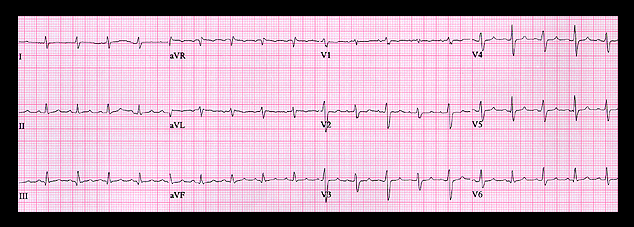
The major finding on this tracing is the alternating QRS shape and amplitude seen best in leads V2, V3 and V4. This is termed “QRS alternans” and when it occurs in association with a pericardial effusion, it is highly suggestive of cardiac tamponade. The echocardiogram in this patient demonstrated a large pericardial effusion with evidence of hemodynamic compromise manifest by collapse of both the right ventricle and the right atrium during diastole. There was also a twisting motion of the heart within the pericardial sac with each contraction. It is this twisting motion that is thought to explain the QRS alternans. QRS alternans may occur in other clinical settings, such as severe chronic obstructive airway disease and during some narrow complex tachycardias, but its presence in a patient with a pericardial effusion is an indication of cardiac tamponade and constitutes a medical emergency.
